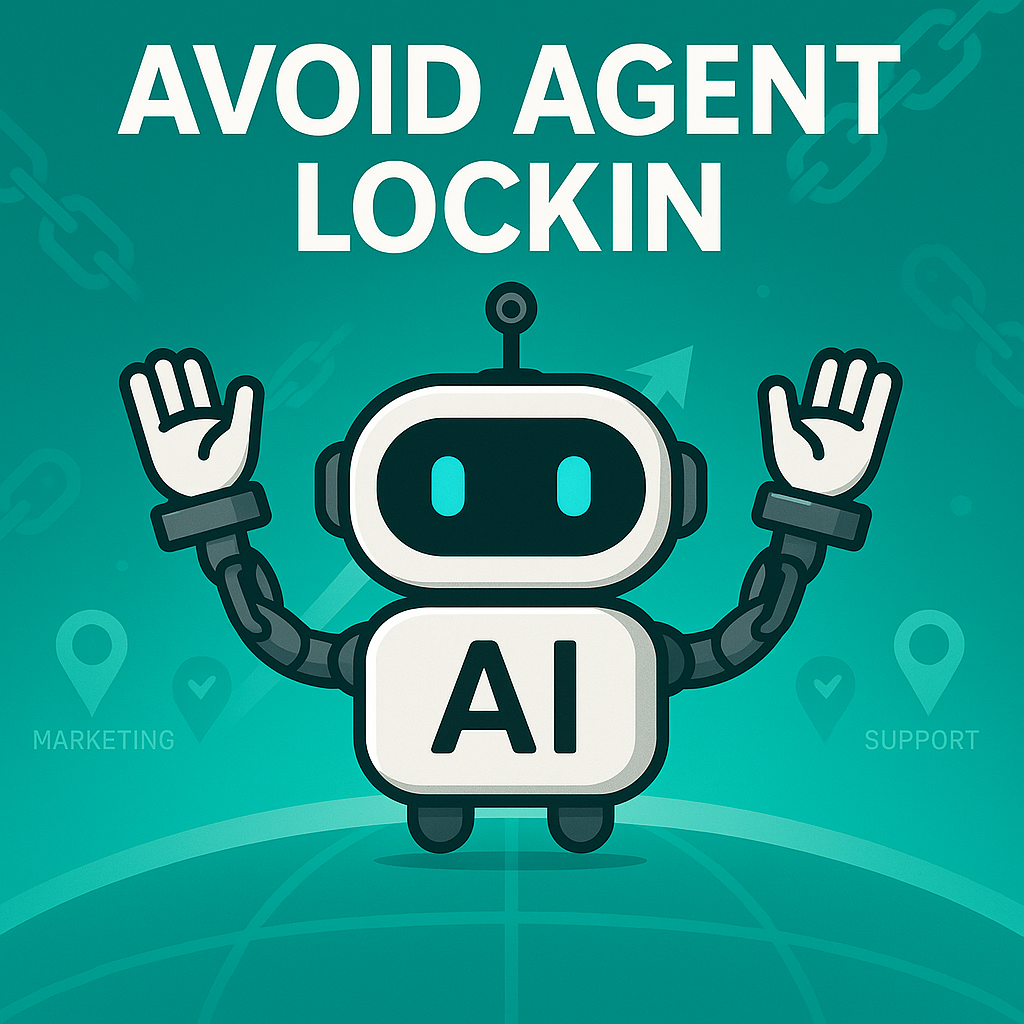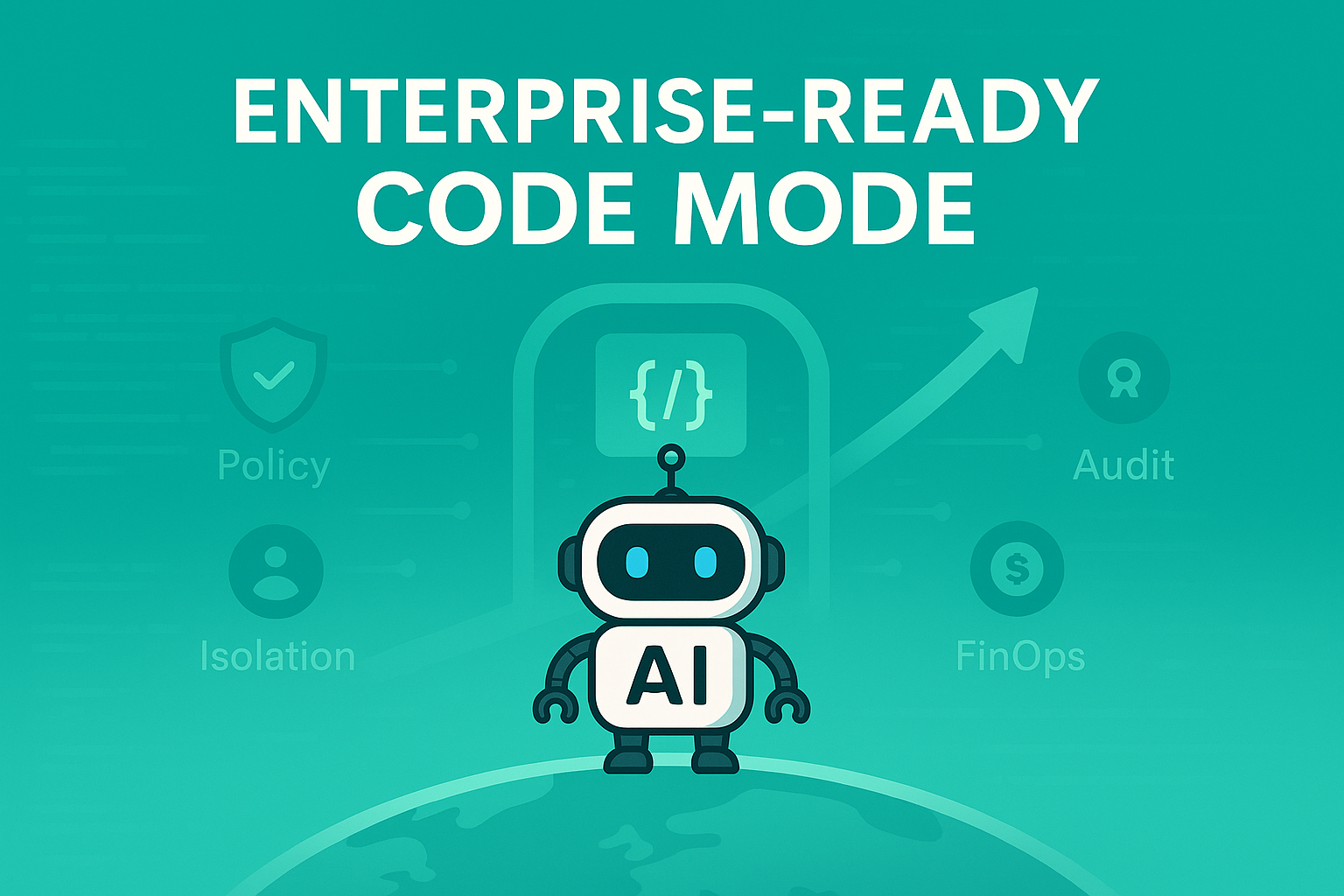Short version: Code Mode compiles an agent's plan into code, runs it in isolates, and lets that code call only policy-approved MCP tools. Cloudflare's "Code Mode" popularized the API+sandbox pattern; Anthropic explains why "code execution with MCP" cuts context bloat, latency, and errors. Palma.ai brings this to the enterprise—on-prem, vendor-neutral, with policy, audit, and FinOps at the tool boundary.
The enterprise lock-in trap (and why AI agents make it worse)
When tool orchestration, model access, and governance are fused into a single vendor's black box, you lose leverage: switching costs spike, security reviews stall, and compliance teams balk. In agent workloads, lock-in multiplies—your tools, model, telemetry, and policy end up hard-wired to someone else's runtime. That's risky for cost, control, and resilience. Industry guidance keeps repeating the same advice: lean on open standards and portable architectures to avoid lock-in.
Why Code Mode helps break lock-in
Code Mode flips multi-hop "guesswork" into a deterministic unit of work: expose tools as a typed API, have the model write code against that API, and execute that code in a sandbox with a minimal capability surface. Cloudflare shows the pattern in practice; Anthropic's engineering team explains the efficiency mechanics—load tools on demand, filter intermediates before they hit the model, and execute complex logic in one step. That reduces coupling to any one runtime and stops you from shoving every tool definition and intermediate blob through a proprietary prompt path.
MCP is the portability layer
MCP (Model Context Protocol) is an open standard for connecting agents to tools, data, and workflows—think of it as the "USB-C for AI apps." Standardizing the contract between agents and tools means your catalog is portable across runtimes and clouds. With major platforms moving to support MCP, enterprises can choose where to run and which model to use without rewriting business logic.
Palma.ai: Code Mode without lock-in (on-prem included)
Palma.ai operationalizes Code Mode as an enterprise control plane you can run on-prem or inside your VPC. You keep model keys and data local, bring your own SLMs or frontier models, and swap vendors over time—policies and catalogs stay the same because they ride on MCP, not a proprietary plug-in scheme. At execution time, Palma.ai runs orchestration inside isolates whose only capability is calling allow-listed MCP tools through governed bindings. We enforce RBAC, scopes, quotas, validate schemas, and record audit-grade traces—plus FinOps metrics like tokens per completed task, first-try success, p50/p95 time-to-finish, and cost per successful action.
On-prem by default (control, compliance, continuity)
Some agent workloads must live behind your perimeter for regulatory, data-residency, or business-continuity reasons. Code Mode fits cleanly with on-prem because the model can generate code inside your environment, and the isolate executes with no filesystem or network beyond policy-approved MCP calls. The result: privacy by locality, clear separation of duties, and operational independence—without giving up modern agent patterns. (Multiple industry primers highlight on-prem AI's strengths in data control and compliance.)
A simple litmus test: "Could we switch in a quarter?"
Ask these in your next architecture review:
- Can we change model vendors without rewriting chains? (MCP + client-side codegen should make that routine.)
- Can we move execution on-prem for a sensitive workflow without losing features or telemetry?
- Do we control the tool catalog as first-class MCP servers, or are we stuck with proprietary plugins?
- Can we prove cost and accuracy deltas (first-try success, p95, tokens) across vendors?
If the honest answer to any of these is "no," you're staring at lock-in.
How Palma.ai keeps you portable
- Open protocol, open exit. Your tools are MCP servers—portable by design—so the same catalog works across agent clients and clouds.
- BYO models. Use private SLMs for orchestration and escalate to frontier models only when they add value. Switching vendors doesn't break your chains.
- On-prem ready. Self-host Palma.ai, integrate with your IdP/SIEM/secret store, and isolate teams with Virtual Servers—including air-gapped options.
- Policy at the tool boundary. Centralize RBAC, scopes, quotas, and schema validation where it matters—between code and tools—not inside a vendor's black box.
- FinOps & audit as first-class features. Measure tokens per completion, first-try success, p50/p95, and cost-per-success; export traces for BI and compliance.
What about Cloudflare and Anthropic?
Cloudflare's Code Mode post demonstrates the developer ergonomics of typed tool APIs + sandboxed execution. Anthropic's code execution with MCP explains the operational math—less context, fewer round-trips, better reliability. Palma.ai combines those insights with enterprise controls, portability, and on-prem deployment. Use the pattern; keep the power.
FAQs
Why is lock-in especially dangerous for agents?
Because agents touch multiple systems—data, tools, and models. If all of that lives inside one vendor's runtime, your cost, compliance, and roadmap depend on their choices. Open standards + portable control planes are the antidote.
Is MCP really "open," and who supports it?
Yes—MCP is an open standard with a growing ecosystem, and large platforms have begun adding support. That momentum increases your future options.
How does Code Mode reduce cost and improve accuracy?
By converting tool orchestration into code and executing it in isolates, you load only the tools needed and keep intermediates out of the prompt—cutting tokens and errors.



